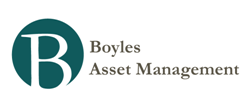Albert Edwards: Europe Is On The Edge Of A Deflationary Precipice That Will, Paradoxically, Usher In 20-30% Inflation
Via Zero Hedge:
Amid all the recent euro-related turbulence, the markets have not focused enough attention on the rapidly vanishing core CPI inflation rates in the US and eurozone. With both moving below 1%, we are now only one cyclical mishap from joining Japan in outright deflation. Given our view that this cyclical recovery will end surprisingly early, slipping into the deflationary mire will trigger further, more extreme rounds of Central Bank monetisation, inevitably driving us towards our ultimate destination – 1970’s style 20-30% inflation will surely return.
Of all the inflation data released this week, the one that caught the markets’ attention was the UK’s dramatically higher than expected 3.7% yoy rise for April. Even the core measure of CPI managed to creep up above the 3% mark. Meanwhile the old RPI, to which most state benefits are indexed, rose a heady 5.3% - the highest pace since July 1991. While many commentators proceeded to berate the Bank of England for consistently underforecasting inflation in recent years, many also saw the first signs of the quantitatively eased pigeons coming home to roost.
But I would argue that in a year or so, we will see the UK’s relatively high inflation rate as a godsend. For elsewhere, it went almost unnoticed this week that core CPI inflation rates in the US and eurozone continue to slip-slide their way down towards zero (see chart below). Although this is seen as buoying bond prices at the margin, it is a pernicious development that investors will focus on when this cycle starts to fail. Regular readers will know that I believe that in a post-bubble world, recession follows recession with surprising rapidity. We are now only one cyclical failure away from Japanese-style outright deflation in the US and the eurozone at a time when de-leveraging still has years to run (falling prices bring the risk of a classic debt deflation trap). Impending cyclical failure and a deflation scare will trigger new lows in equities as the valuation bear market finally plays itself out with the S&P falling below 500. We therefore maintain our long-standing target of sub-2% US 10y bond yields - and that is the point when QE will really begin to get serious.
- Albert Edwards: The Economic 'ice Age' Isn't Over
Zero Hedge also has some excerpts HERE. It is worth repeating the very simple point that an integral part of the Ice Age thesis is lower lows and lower highs for nominal economic quantities in each cycle. So, for example, in the chart below we see progressive...
- John Mauldin: The Curve In The Road
“I shall be telling this with a sigh,” and it is with a sigh that I write about the twisting, uncertain roads of inflation and deflation. Long-time readers know I have made hard arguments for first deflation and then inflation in the US. But the data...
- Changes In The Inflation Rate Matter As Much To Investors As The Level - By Bill Hester
The topic of inflation tends to be a tool used by both sides of the debate about stock market performance. It's argued that because corporations can pass on rising prices of raw goods to consumers, earnings will keep pace with inflation, so equities...
- John Mauldin: O Deflation, Where Is Thy Sting?
The CPI was out this week, and it showed a continued drop in inflation. There were those who immediately pointed out that this vindicated the Fed’s move to QE2. We have to get ahead of this deflation thing, don’t we? Well, maybe, depending on how...
- John Mauldin: Some Thoughts On Deflation
The debate over whether we are in for inflation or deflation was alive and well at the Agora Symposium in Vancouver this week. It seems that not everyone is ready to join the deflation-first, then-inflation camp I am currently resident in. So in this...

